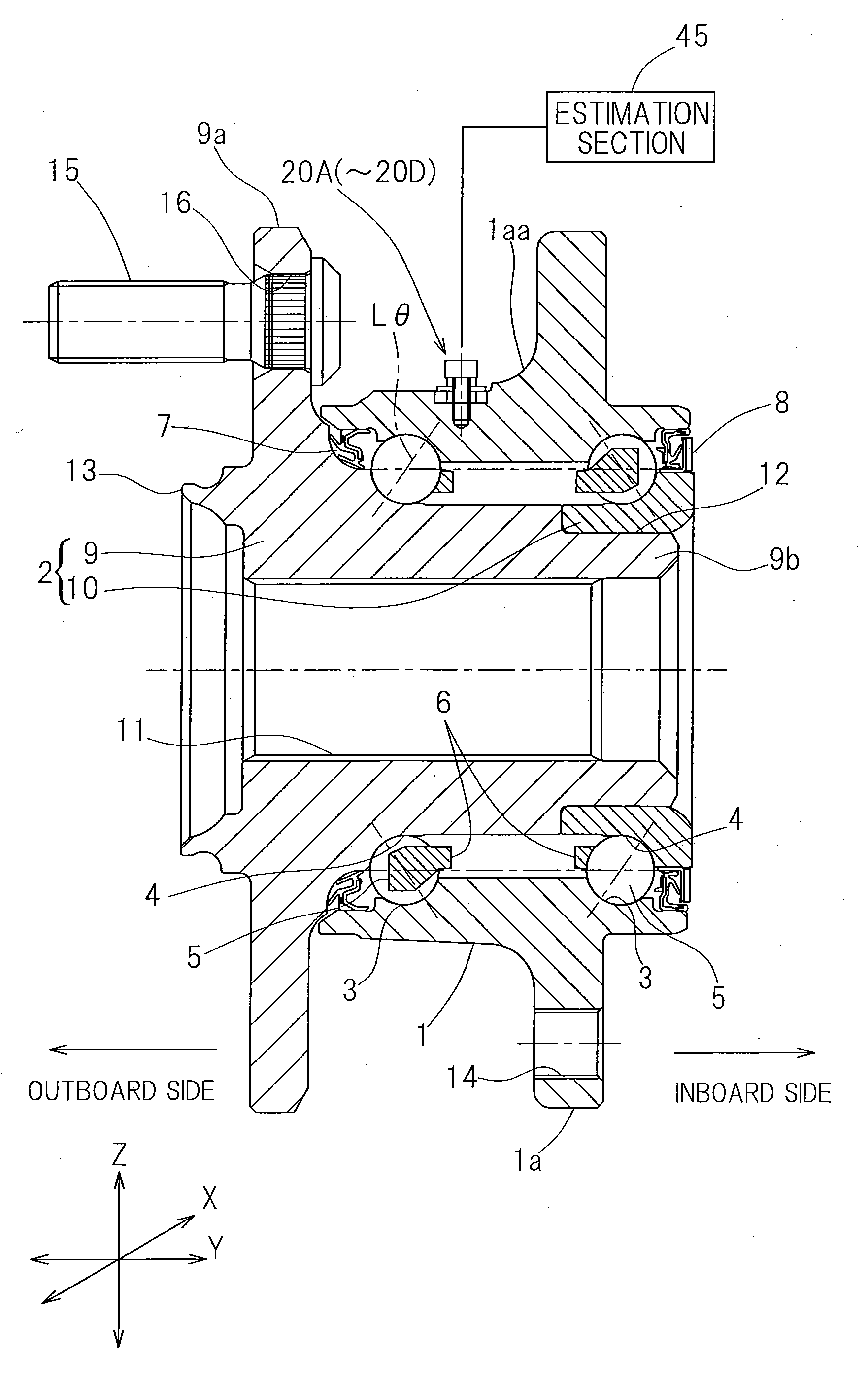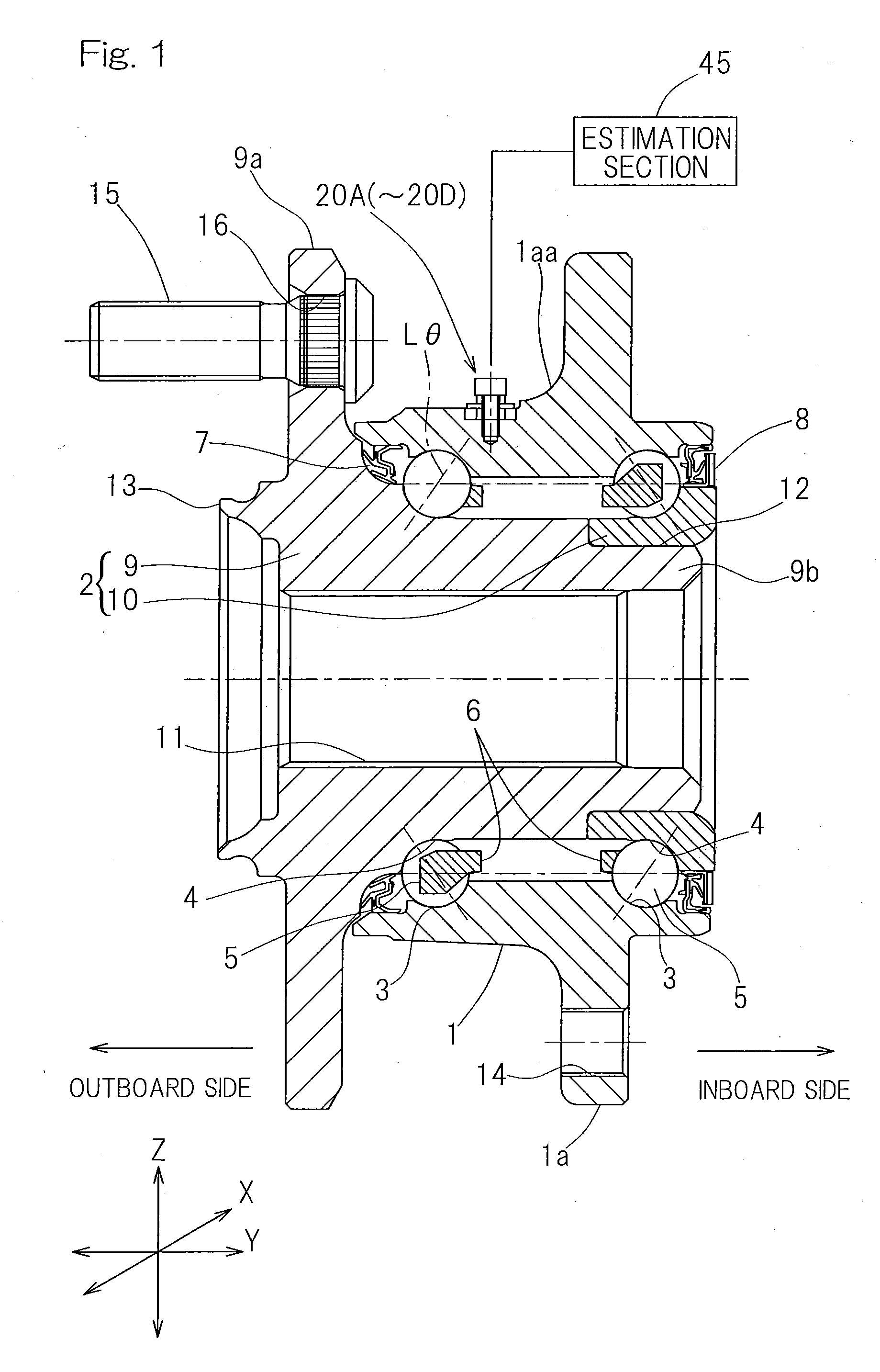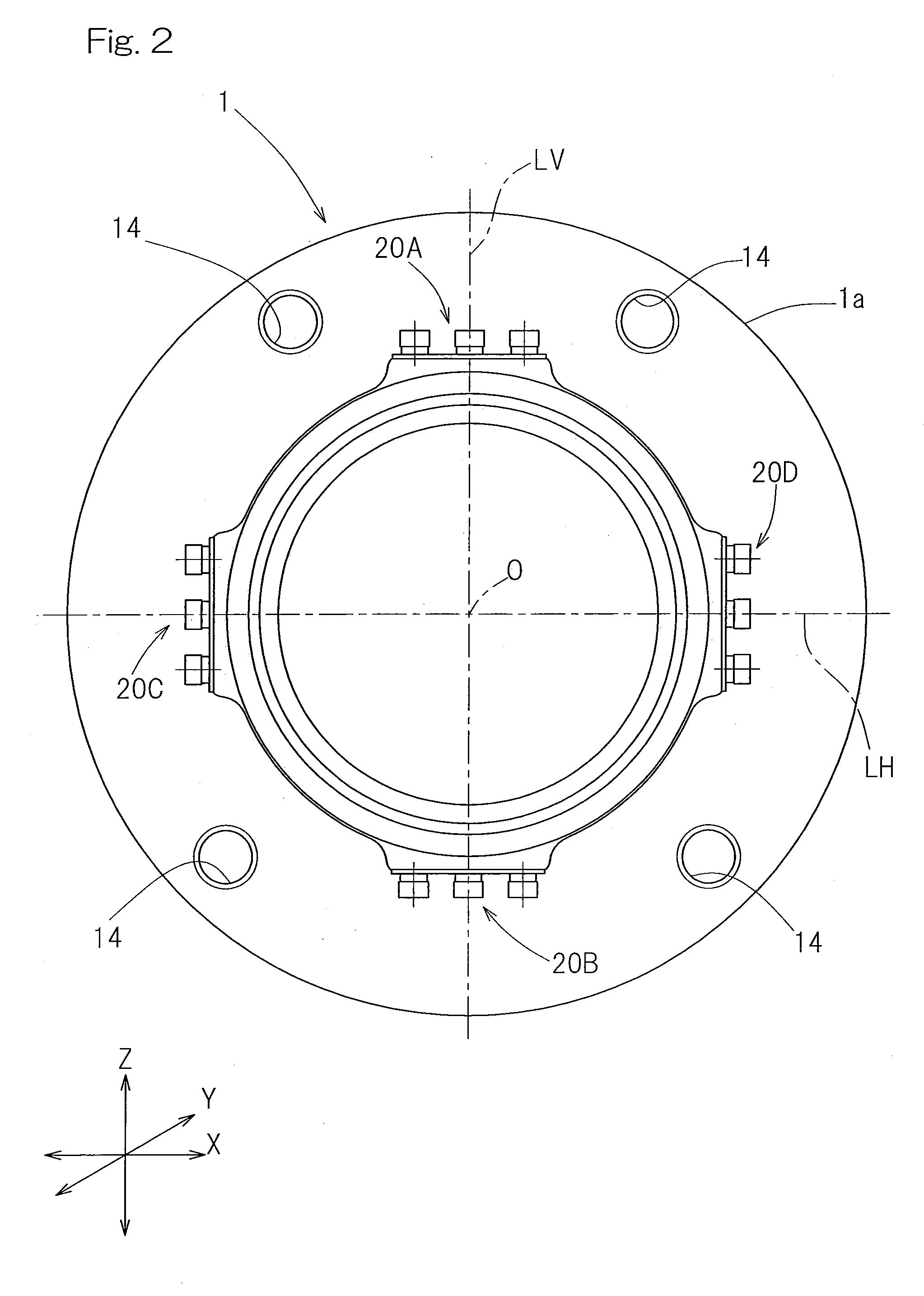Wheel bearing with sensor
a technology of sensor and wheel bearing, which is applied in the direction of instruments, force/torque/work measurement apparatus, transportation and packaging, etc., can solve the problems of sensor corrosion, output signal hysteresis, and problem of assemblability
- Summary
- Abstract
- Description
- Claims
- Application Information
AI Technical Summary
Benefits of technology
Problems solved by technology
Method used
Image
Examples
first embodiment
[0099]the present invention will be described in detail with particular reference to FIG. 1 to FIGS. 6A to 6C. The embodiment shown in FIG. 1 to FIGS. 6A to 6C is an inner ring rotating model of the third generation type and is applied to a wheel support bearing assembly for the support of a drive wheel. It is to be noted that in the description set forth hereinabove and hereinafter, the terms “outboard” and “inboard” are to be understood as meaning one side of the vehicle body away from the longitudinal center of the vehicle body and the other side of the vehicle body close to the longitudinal center of the vehicle body, respectively, when assembled in the vehicle body.
[0100]A bearing unit in this sensor equipped wheel support bearing assembly includes, as shown in a longitudinal sectional representation in FIG. 1, an outer ring 1 forming an outer member having an inner periphery formed with a plurality of rolling surfaces 3, an inner member 2 having an outer periphery formed with ...
second embodiment
[0125]In that case, as the outer ring outer peripheral surface portion adjoining the arcuately sectioned portion 1aa on the outboard side, which area 1aa is formed in the outer periphery of the outer ring 1 so as to extend from a base end of one side of the flange 1a oriented towards the outboard side to the outer periphery of the outer ring 1, the sensor units 20A to 20D may be provided at the outer ring outer peripheral surface portion within a region axially spaced within 5 mm from a terminating end of the articulately sectioned portion 1aa such as employed in the practice of a second embodiment shown in FIG. 7. When the sites of installation of the sensor units 20A to 20D are chosen within the range spaced within 5 mm in the axial direction from the terminating end of the articulately sectioned portion 1aa in the manner described above, even when variation occurs in the temperature distribution of the outer ring 1 and the expansion • contraction amount, the influence thereof can...
fourth embodiment
[0170]FIG. 31 is a figure corresponding to FIG. 11 pertaining to the fourth embodiment and, except that it differs from FIG. 11 in respect of the position at which the sealing material 37 is applied to that portion where the signal cable drawing portion 32B is drawn, other structural features thereof are similar to those shown in FIG. 11.
[0171]In the case of this tenth embodiment, unlike the previously described fourth embodiment best shown in FIG. 10, the protective shroud 29 used to enclose the outer periphery of the outer ring 1 is so shaped as to be stepwise flared outwardly with its outer diameter increasing from the outboard side towards the inboard side. Moreover, whereas in the previously described fourth embodiment, the inboard end of the protective shroud 29 is provided with the lip member 35 made of an annular elastic element so as to extend along the open edge thereof and this lip member 35 is held in contact with the outboard oriented side face of the vehicle body fitti...
PUM
 Login to View More
Login to View More Abstract
Description
Claims
Application Information
 Login to View More
Login to View More - R&D
- Intellectual Property
- Life Sciences
- Materials
- Tech Scout
- Unparalleled Data Quality
- Higher Quality Content
- 60% Fewer Hallucinations
Browse by: Latest US Patents, China's latest patents, Technical Efficacy Thesaurus, Application Domain, Technology Topic, Popular Technical Reports.
© 2025 PatSnap. All rights reserved.Legal|Privacy policy|Modern Slavery Act Transparency Statement|Sitemap|About US| Contact US: help@patsnap.com



